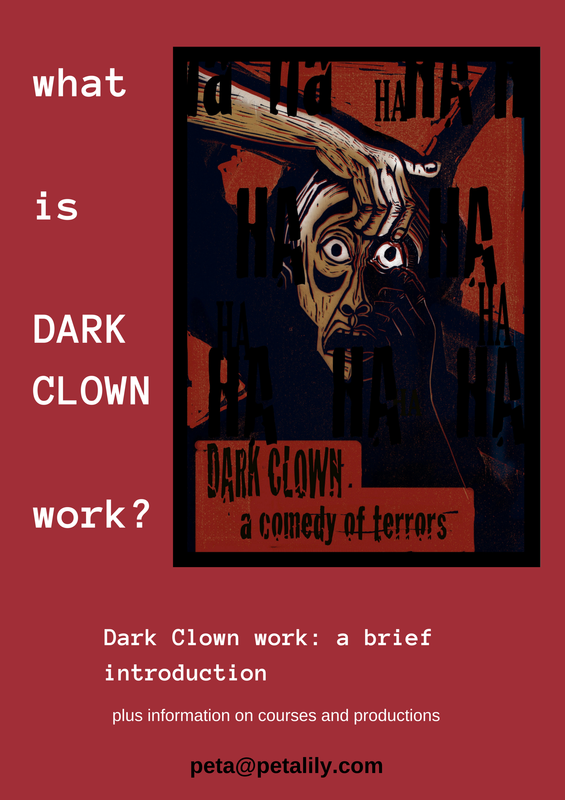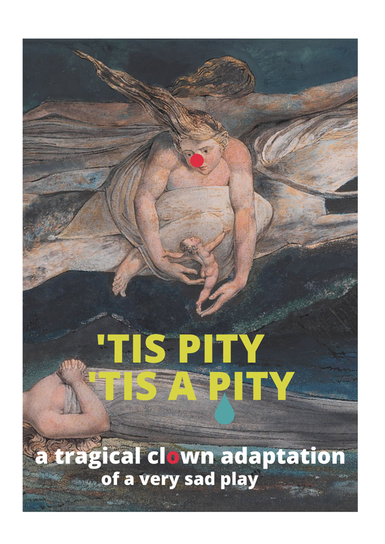
'Great Actress:
Pity verb: 3rd person present:
to feel sorrow for the misfortunes of – for example: "I could see from their faces that they pitied me."
Putana (blinded):
I can’t see, I can’t see!'
- 'Tis Pity 'Tis A Pity 2021
'… nice Philosophy may tolerate unlikely arguments,
but Heaven admits no jest’
- ‘Tis Pity She’s A Whore Act 1 scene i
There was no showing - but the e-poster might have looked like this.
2021
In Summer 2021, travelling to work by tube where most people's best efforts to socially distance contrasted with free-ranging groups of football enthusiasts chanting unmasked and beating on the sides of the trains, I was again approaching John Ford’s play 'Tis Pity She’s A Whore as a Clown Drama.
Risk Assessment & Laughter
I achieved a First Aid certification prior to beginning the module, as we were to be working isolated in a special offsite location. The student cast were ‘bubbling’, keeping to their small community each day, so we were able to work unmasked. It was unnerving doing the risk assessment for devising a Clown production.
Hazard: covid aerosol inhalation via the normally joyful and health-giving phenomena of laughter.
Precaution: social distancing.
But Clowns are unpredictable, and in one exercise, one clown inadvertently stuck his hand right into another clown’s mouth (you had to be there). A kind of spontaneous Lateral Flow Test, but with fingers instead of a swab. Luckily no harm was done.
Ingredients
Inspired by the timbre of Phil Collins' Something In The Air Tonight, the clown adaptation was to open with a chorus of clowns tasting and testing the air - sensing, some with fingers raised, some with tongues out.
For a chorus clown, this sliver of text from Oedipus was repurposed and re-phrased.
Oh Oh Oh Oh
My soul is racked and shivers with fear.
I wish no harm but beg ye (to audience]
drive
From our land the plague,
please hear us now and defend us!
Ah me, what countless, countless woes!
Hope on hope down-striken goes.
Coughing is forbidden and so are sighs
while the powerful spread the contagion of their lies !
Clown Council
My clown dramaturgy process of the Clown Council yielded, among other themes, a voice for sex-positivity, realised within the character of the lovable, flawed Putana.
One student had discovered a high status clown. She developed the character of Great Actress.
She wanted to read the Frontispiece on the play – here it is, adapted for clown delivery:
‘TIS
PityShe’sAWhore
Not quite ‘as acted by the Queen’s Majesty’s Servants
AT The Phoenix in Drury Lane, LONDON' (words in caps meaninglessly shouted)
(she weeps)
Printed by one Nicholas Okes for one Richard Collins and to be sold at the latter’s shop In Paul’s Churchyard,
inthenookonthelefthandside under the sign of the
Three Kings, 1633 (gesture of 3 crowns)
(dramatic) Dramatis Personae (theatrically humble):
Bonaventure, A Friar - but no one calls him by his name
A Cardinal - Nuncio to the Pope
Soranzo - who’s a Nobleman
Florio - a mere citizen
Ditto Donado
Grimaldi - described as a Gentleman but quite frankly a thug
Giovanni, son to Florio
Bergetto nephew to Donado - are you keeping up?
Richardetto, Vasques, Poggio, Banditti, Annabella, Hippolita, Philotis and
Putana
'The writing of this potent tome
Was done with safety from the author’s home
It tells of love in unlikely times
And portrays incest and other crimes.'
Empty cities
The drone shots of empty cities that sprouted up on YouTube inspired a section on the architecture of Parma, which one clown narrated as the clown chorus embodied:
The Strada Repubblica, once a Roman road built in 187 BC.
The Ponte di Mezzo (Middle Bridge), the Ponte Romano.
The Battistero di Parma (the city’s Baptistery), in the Gothic style. Oct-ag-onal.
Pink Verona marble exterior
And within: a highly frescoed cupola.
Porticos, cupolas, churches …. Cathedrals.
Losing our religion
We had a Godfather-style Pope.
Pope:
Kiss my ring.
Friar:
Of course.
Pope:
Take The Gun, Leave The Cannoli.
Friar: What? What gun?
Pope:
I Don’t Like Violence, Tom. I’m A Businessman. Blood Is A Big Expense.
Friar:
(confused) My name’s not Tom.
The powerful men of town
In the real world, Dominic Cummings was driving long distances to test his eyesight and spread the virus, and there were regular briefings from our PM - Text here filched and re-fashioned from Moliere.
The powerful men of town place rubber-gloved hands on Hippolita and Annabella while Putana assists.
Soranzo:
There’s no shame in hypocrisy, nowadays; it’s
so fashionable, people think it’s a virtue.
So prevalent – it’s invisible! Like an air-bourne plague.
Hypocrisy has friends in the highest places;
with special privileges …
Something is rotten in the state
Putana (in a costume made entirely of blue surgical masks) speaks:
Putana:
Hello everybody, Ciao bello! My name is Putana.
As I am a very woman, I am here to orally (tongue through slitted mask)
express my own truth.
Something is rotten in the state of Italy!
Can you taste it in the air?
(Chorus of clowns very briefly reprise tasting air)
This place is filled up with some rich and handsome fellas: Giovanni, Soranzo, Berghetto, Poggio, Florio, Vasquez and Donado …
The problem is that they are all so Pious!
I try my best, I offered ‘orizontal refreshment to them, jelly rolls, comfort, slap & tickle.
Even threesies. Nada. Niente.
The church has everyone in a tight grip
The town of Parma is afraid.
The people of Parma are paralysed,
Petrified. Afraid of their own bodies. Their own desires.
Pride
A little later, she announces:
Putana:
Happy Pride month everybody! It Is so lovely to see you all together.
Let the whole city of Parma hear us: LOVE IS LOVE! (get audience to say it)
I can’t hear you …. LOVE IS LOVE! One more time LOVE IS LOVE!
Yes!!!
And this year, I am honoured to open the first ever INCEST PRIDE MARCH!
(Pairs of clowns parade: each wears a cardboard sign on blue rope.)
Dad / Nephew
Sister / Sister
Brother / Step-brother
Mum / Grandpa
Sib / Lings
Clown chorus sing:
We are family
Brother sister mother and me
We are family
Get up everybody and sing!
The problem with Parties
There was a frission around the gathering of the play’s wedding party. A clown appointed to count and recount, ineptly.
Hippolita crashes the wedding party, reciting text from Pity Party. (Melanie Martinez's video shows a party where no one has shown up - a 2015 pre-figuring of covid isolation!).
Knee-jerk reactions
The knee-jerk reactions on social media each day made a mark:
Vasques: Tricking my master to buy a calzone pizza for a bride!
This calls for more random, knee-jerk and self-righteous vengeance –
Bandits: (they move quickly to appear at his side in in their huddle) At your service, sir!
Vasques points at Giovanni. Bandits surround him saying stab stabstab stab stabstab)
Bandits: stab stabstab stab stabstab
Giovanni: Whose hand gave me this wound?
(Bandits raise hands 1234 in staccato rhythm.)
Giovanni: Oh, I bleed fast.
Death, I …
… Annabella's face. (G says this as if seeing her in heaven, but the dead Annabella shows her face, eyes crossed and tongue out)
(Giovanni dies.)
Vasques: Let me use my random agency to compel you all to spit on the memory of Annabella. (the powerful characters make a raspy sound of preparing to spit – Vasques says, swiftly) Metaphorically! They don’t call me Vasques the Socially Responsible for nothing.
(The Friar is appalled at the exhortation to spit, then nods at the social responsibility.)
(The Bandits - whose day job does not interfere with them being proudly ’woke’ and ethical - applaud ‘socially responsible’ and nod.)
Punishment
Unlike in the original play, in this ‘Tis Pity, Putana’s punishment takes centre stage;
Vasques: Grab the whore-mongering whore.
(Bandits appear quickly in their huddle)
Bandit 2: Do you mean the sex-worker?
Bandit 1: We prefer the term sex-worker.
Bandit 3: Word.
Vasques: Grab Annabella’s nurse, Putana!
Tis Pity There's No Pity
You could argue how well the pandemic was dealt with by the government – you could be forgiven for saying that there seemed to be a failure of compassion* among many of those in power.
The ‘Great Actress’ Clown) delivers a dictionary definition of Pity while poor Putana is tortured.
Great Actress: Pity … pronunciation: /ˈpɪti/ noun.
The feeling of sorrow and compassion caused by the suffering and misfortunes of others.
Vasques: Take out her eyes!
Putana: What?! No No
(One arm, two arms to place hands on Putana’s eyes. If possible, the front 2 bandits have red makeup on their fingers [warmed in hands] to smear on Putana’s eyelids.)
Clown Chorus: Ooooh! (flinching)
Great Actress: For example: "the sight of the maiming filled the onlookers with pity"
(Putana cries out. Clown chorus look appalled / distraught.)
Great Actress: Synonyms:
compassion , commiseration , condolence
sorrow , sympathy
distress , regret
Antonyms: Indifference, …
(Clown Chorus turn away with shame, not indifference while
The Powerful - Soranzo etc - check their fingernails, phones, or use antibacterial wipes.)
Great Actress: … Cruelty. (sobs from Putana)
Pity verb: 3rd person present:
to feel sorrow for the misfortunes of – for example:
"I could see from their faces that they pitied me"
Putana: I can’t see, I can’t see
(Vasques stabs her – Putana dies, but remains standing in crucifix position, but drooped.)
Great Actress: Pity, alternate meaning: a cause for regret or disappointment.
For example:
"it's a pity she got pregnant”
“it’s a pity a sweet idiot like Bergetto was killed. By ‘accident’”
“It’s a pity a brother and sister fell for one another”
“It’s a pity about the plight of the hard-working, disenfranchised bandits dehumanised by the capitalist structure”
Bandits: hear hear, right on, word. (and solidarity fists)
Ex-machina
The character known as ‘Pope/God thing’ arrives. In an ideal world, they would be suspended from on high, but in this student clown production, piggy-backed in by someone.
All: (inhale) it’s the pope / god / supreme being thing!!
God Pope Thing: Take up these slaughter'd bodies,
Clown chorus intone: shame
God Pope Thing: see them buried;
Clown chorus: crying shame
God Pope Thing: And all the gold and jewels,
Wallets, spare-change whatsoever,
Clown chorus: misfortune
God Pope Thing: Confiscate by the canons of the Church,
Clown chorus: crime (then feel a bit worried they said that)
God Pope Thing: We seize upon these goods - and divert them to the Pope's proper use.
All, including Friar, but not Putana: Of course.
(All leave the stage – some flouncing, some ashamed and compromised.)
Interruption
Along with contrast, clarity, pace, stupidity, alternate logic, micro-pauses, clocks, drops, rhythm, timing, representation of minor characters,
interruption
is a useful comic device.
Putana: The Parmesan people …
(Quick appearance by Poggio with a wedge of parmesan cheese.)
Daniel/Poggio: ‘My Master said that he loved her almost as well as he loved Parmesan.’
Interruption is Interruption
But IRL, interruption is interruption. Abruptly (as in 2020), our 2021 covid-themed ‘Tis Pity rehearsals stopped because an-extra mural workshop brought Covid into the group, so, as in 2020, this new iteration of Clownacy never had a sharing, not even to a small, covid-safely-distanced group of viewers.
* lack of compassion towards nurses, the disabled, the elderly ... and others
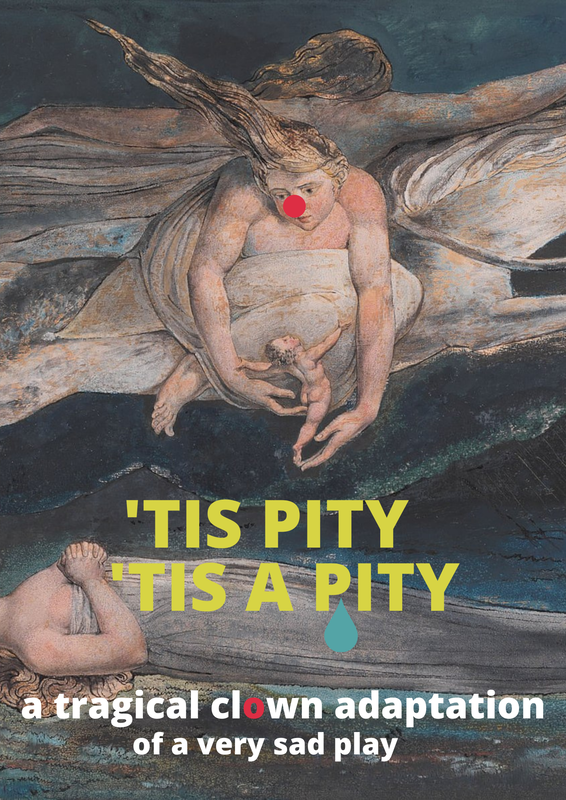
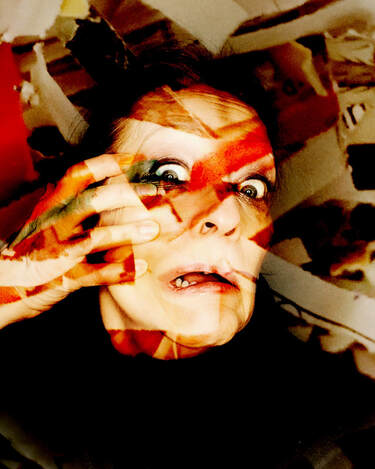

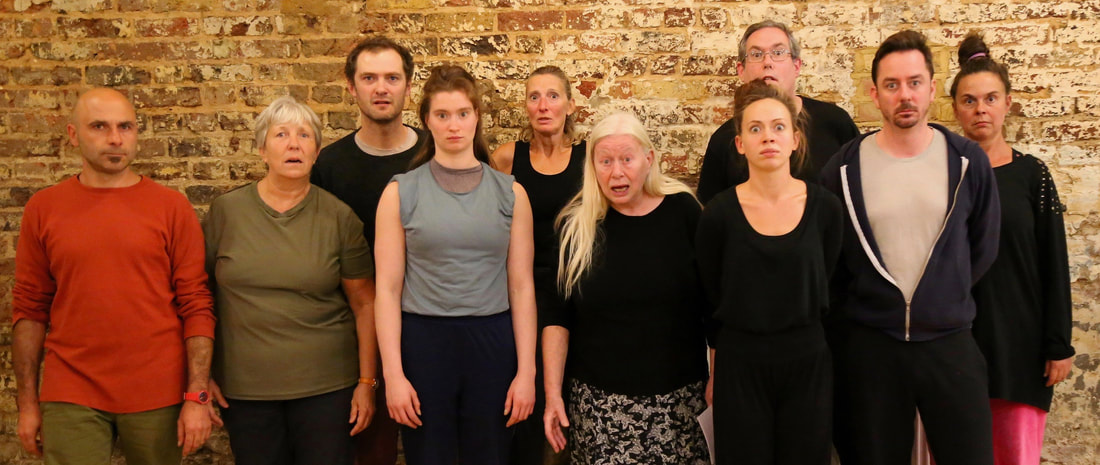

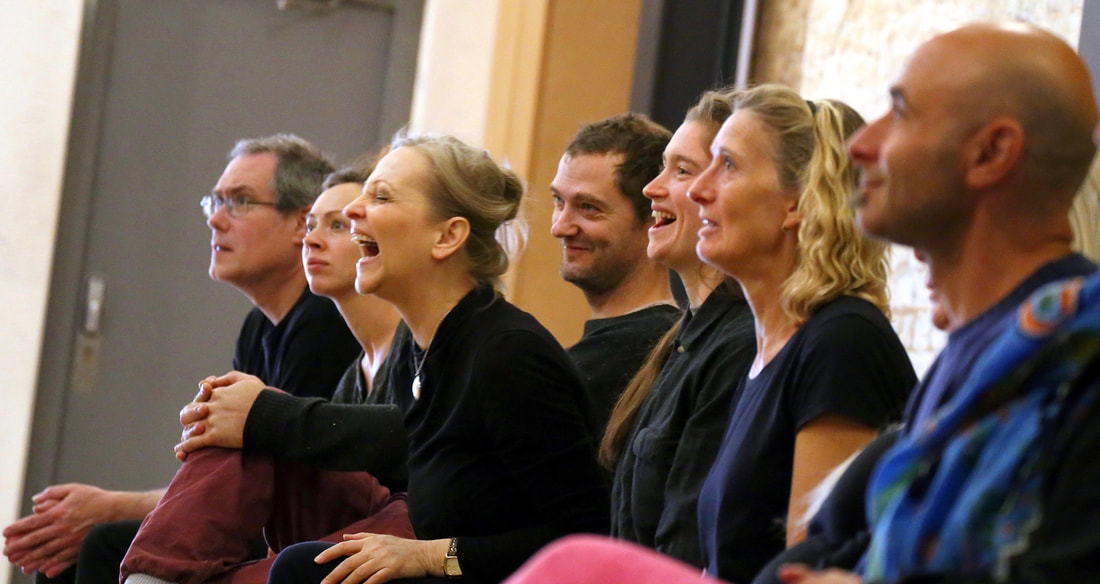
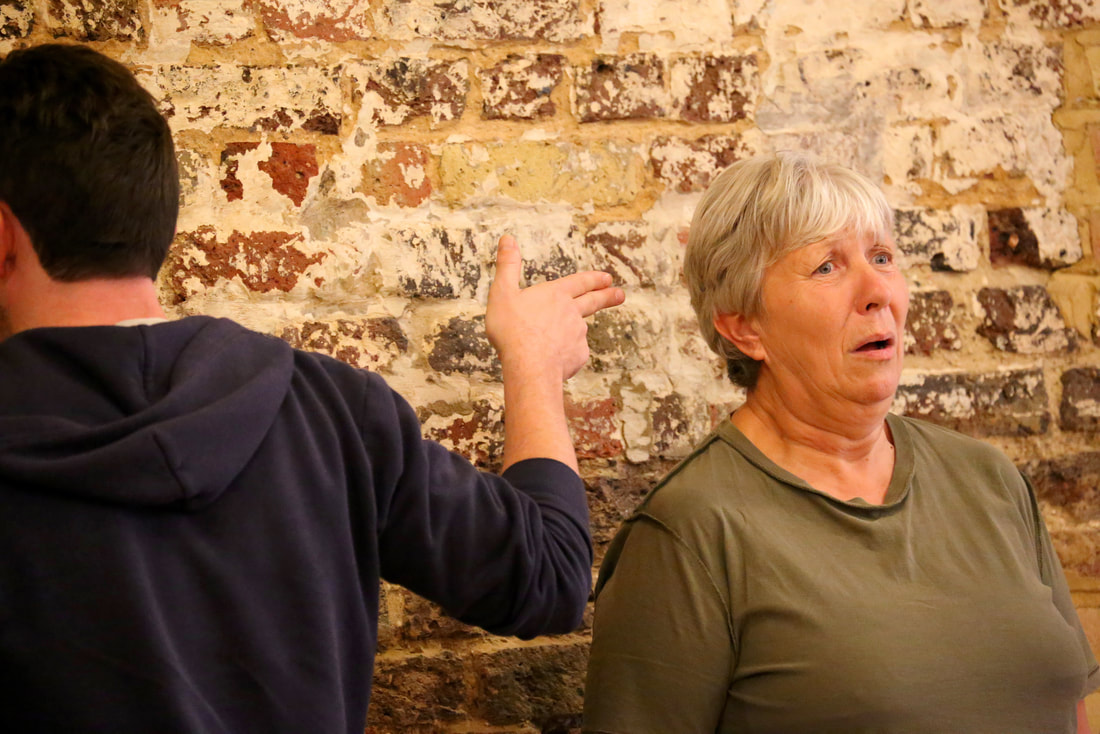

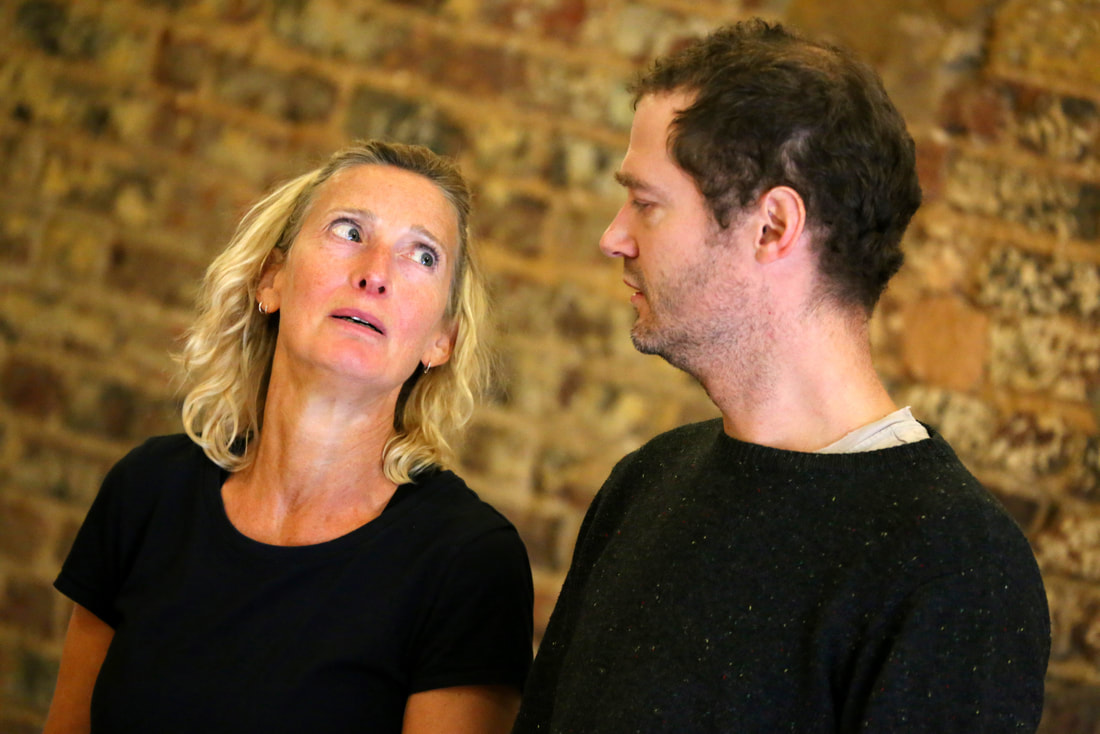
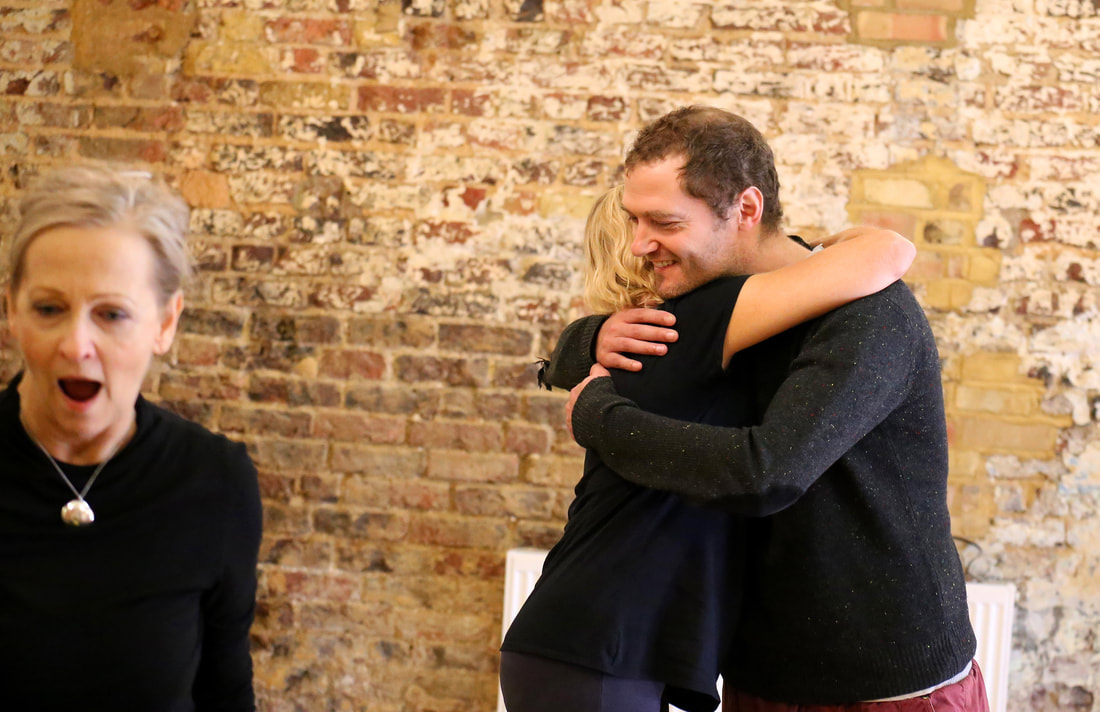

 RSS Feed
RSS Feed
